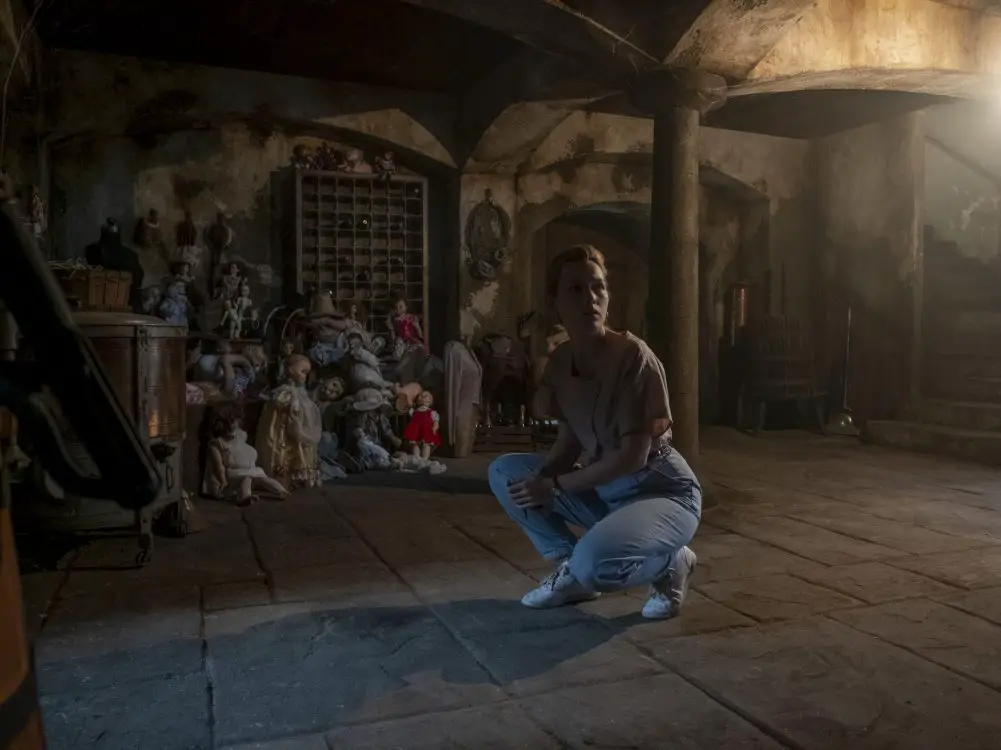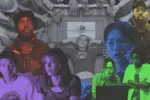Spoilers for both “The Haunting of Bly Manor” and “The Turn of the Screw” will pepper this article, so read at your own risk!
“The Haunting of Bly Manor” is the unaffiliated follow-up to “The Haunting of Hill House,” and it debuted on Netflix earlier this month.
The series is loosely based on the novella “The Turn of the Screw” by British author Henry James. “The Turn of the Screw” follows the tale of a young governess sent to watch two orphaned children at a large house in the English countryside. She begins to see terrifying apparitions of the former governess, Miss Jessel, and servant Peter Quint, who appear to have a demonic influence on the children.
One of the scariest aspects of “The Turn of the Screw” is your inability to tell if the ghosts are real or if the unnamed governess is slipping into insanity. At the end of the novella, the boy Miles dies in the governess’ arms, and it’s unclear if she killed him in her madness or if the ghost of Peter Quint somehow killed him from beyond the grave.
“The Haunting of Bly Manor” uses “The Turn of the Screw” as a source text. The show follows Dani Clayton, an American governess in the 1980s who is sent to care for two orphaned children, Miles and Flora, at Bly Manor in the English countryside. Dani is portrayed by Victoria Pedretti, who also played Nell in “The Haunting of Hill House.” Dani has a tragic backstory with a dead fiancé, and she sees ghosts before she arrives at Bly, which removes any doubt about the reality of the ghosts.
https://www.youtube.com/watch?v=tykS7QfTWMQ
The children also seem to see the ghosts. Flora stares off into space at things that are not there. Miles acts strangely from the beginning, before the show reveals he intentionally got himself expelled from boarding school because Flora begged him to return at the behest of the dead Miss Jessel.
While “The Turn of the Screw” is the backbone of “The Haunting of Bly Manor,” the show also takes certain elements from some of James’ other stories. Creator Mike Flanagan said, “Great, we can go ‘Turn of the Screw’ for a minute…That can be our spine. But the rest of this body that is going to be the season is going to be made of all these other stories. And we can find a way to fit them all together. To try to combine them into one narrative that really celebrates the themes that he was interested in.”
The dark origin of Bly Manor comes from a different James’ story, as does Henry Wingrave’s ghostly encounters with his terrifying dark alter ego. The main ghost, the reason Miss Jessel and Peter Quint find themselves trapped at Bly after death, is the Lady in the Lake.
The Lady in the Lake, according to the show, was Viola, a noblewoman who contracted tuberculosis and was smothered by her own sister. Her ghost haunts Bly, creating a sort of “gravity well” that traps anyone else who dies at Bly. The gravity well slowly erases the ghosts left at the mansion, leaving them faceless and without memories. Viola murders people at Bly, including Peter Quint, in her quest to find her daughter who left the manor in the 17th century.
Viola was not a feature in “The Turn of the Screw.” The only ghosts present are Miss Jessel and Peter Quint, who are romantically entangled in the show. In the series, housekeeper Mrs. Grose is also revealed to have been murdered by Peter Quint, possessing Miles. All her appearances in the show are as a ghost, even though she doesn’t realize it until the end.
“The Haunting of Bly Manor” also brings in two original characters: Owen the chef and Jamie the gardener. Both take part in romances with other characters at Bly — Owen with the unknowingly dead Mrs. Grose and Jamie with Dani the governess. The romances are heavily featured onscreen, making the show more of a gothic romance than a gothic horror, which varies from James’ writings.
A huge difference between “The Turn of the Screw” and “The Haunting of Bly Manor” is the ending. Miles does not die, and the ghosts are confirmed to be real, not a figment of Dani’s imagination. Instead of Miles losing his life, Dani sacrifices hers to the Lady in the Lake to save Flora from the ghostly apparition, eventually becoming possessed by her years later. The ghosts at Bly become free to move on. In a bittersweet ending, Flora and Miles forget everything that happened, including Dani’s selfless sacrifice. They live, unburdened by the trauma of Bly, but they don’t know what she gave up for them.
While the differences between the source texts and the television series abound, the show still embodies the spirit of James’ work. Flanagan said that James’ influence is “woven into the DNA of modern genre like a pale, wide-eyed ghost peering out from behind the façade of contemporary horror.” This is an apt description of James’ impact on contemporary horror and how he inspired “The Haunting of Bly Manor.”
















